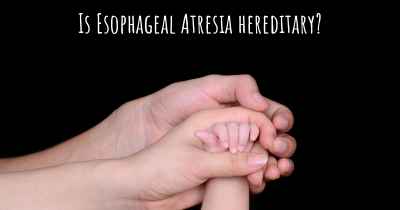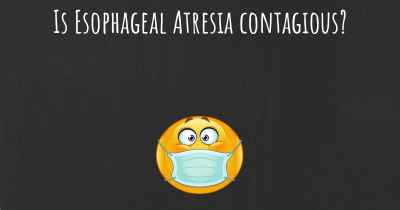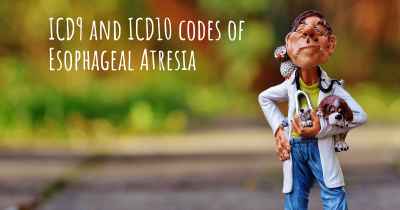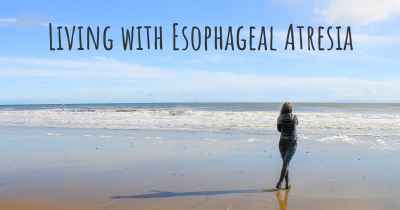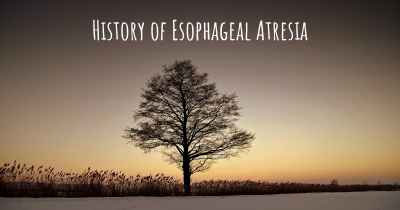What is the life expectancy of someone with Esophageal Atresia?
Life expectancy of people with Esophageal Atresia and recent progresses and researches in Esophageal Atresia
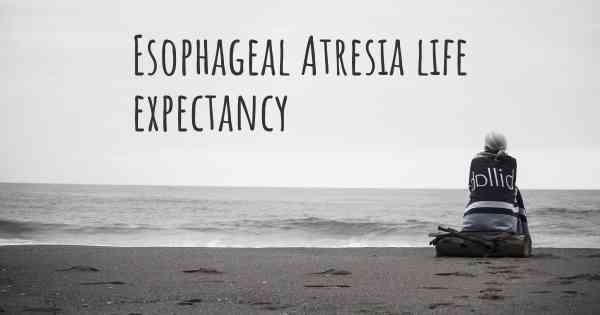
Esophageal Atresia is a congenital condition where the esophagus does not develop properly, resulting in a gap between the upper and lower parts of the esophagus. The life expectancy of individuals with Esophageal Atresia can vary depending on several factors, including the severity of the condition, associated anomalies, and the effectiveness of surgical interventions. With advancements in medical care and surgical techniques, the prognosis for individuals with Esophageal Atresia has significantly improved over the years. Early diagnosis and prompt treatment are crucial for better outcomes. It is important for individuals with Esophageal Atresia to receive ongoing medical care and follow-up to manage any potential complications and ensure optimal health and quality of life.
Esophageal Atresia (EA) is a congenital condition characterized by the incomplete development of the esophagus, the tube that connects the mouth to the stomach. It occurs when the upper and lower parts of the esophagus do not properly connect during fetal development. This condition affects approximately 1 in every 2,500 to 4,500 live births.
The life expectancy of individuals with Esophageal Atresia can vary depending on several factors, including the severity of the condition, associated anomalies, and the effectiveness of surgical interventions. It is important to note that each case is unique, and prognosis should be discussed with a healthcare professional who can provide personalized information based on the specific circumstances.
Treatment and Surgical Interventions:
Esophageal Atresia requires surgical intervention shortly after birth to correct the anatomical defect. The primary goal of the surgery is to establish a functional connection between the upper and lower parts of the esophagus, allowing for the passage of food and fluids from the mouth to the stomach.
The surgical procedure typically involves the following steps:
- Repair of the esophagus: The surgeon will carefully reconnect the upper and lower parts of the esophagus, ensuring proper alignment and tension-free anastomosis.
- Placement of a feeding tube: In some cases, a temporary feeding tube may be inserted through the nose or mouth to provide nutrition while the repaired esophagus heals.
- Monitoring and follow-up: After the surgery, regular monitoring and follow-up appointments are essential to assess the healing process, manage any complications, and ensure proper growth and development.
Prognosis and Long-Term Outlook:
The prognosis for individuals with Esophageal Atresia has significantly improved over the years due to advancements in surgical techniques and neonatal care. With early diagnosis and prompt surgical intervention, the majority of infants with EA can lead fulfilling lives.
However, it is important to note that some individuals may experience long-term complications or associated anomalies that can impact their overall health and life expectancy. These complications may include:
- Gastroesophageal reflux: Many individuals with EA experience gastroesophageal reflux, a condition where stomach acid flows back into the esophagus. This can lead to discomfort, difficulty swallowing, and other complications if left untreated.
- Respiratory issues: Some individuals may have respiratory problems, such as recurrent respiratory infections or pneumonia, due to the proximity of the esophagus to the airways.
- Feeding difficulties: Infants with EA may face challenges with feeding, such as difficulty swallowing or aspirating food or fluids into the lungs. This may require specialized feeding techniques or the use of feeding tubes.
- Associated anomalies: Esophageal Atresia is often associated with other congenital anomalies, such as heart defects, tracheoesophageal fistula (an abnormal connection between the esophagus and trachea), or other gastrointestinal abnormalities. The presence of these additional conditions can influence the overall prognosis and life expectancy.
It is crucial for individuals with EA to receive comprehensive medical care, including regular follow-up appointments with a multidisciplinary team of healthcare professionals. This team may include pediatric surgeons, gastroenterologists, pulmonologists, nutritionists, and other specialists who can address the specific needs and challenges associated with Esophageal Atresia.
Conclusion:
While it is challenging to provide a specific life expectancy for individuals with Esophageal Atresia due to the wide range of factors that can influence prognosis, early diagnosis, timely surgical intervention, and comprehensive medical care significantly improve the long-term outlook for affected individuals. With appropriate management and support, many individuals with EA can lead fulfilling lives and achieve normal life expectancies.

